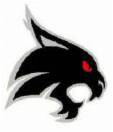About Us (Birney K-8)
 Birney Bobcats
Birney Bobcats
Team work makes the dream work!
Student Supply List (grades K - 5) 2022 - 2023
Student Supply List (grades 6 - 8) 2022 - 2023
9 Years at Birney K - 8 School
Birney Middle School presently takes dependent K - 8th grade learners and enables them to successfully transition and gain the skills necessary for independent high school students. Academic, social, and developmental challenges and lessons are incorporated with the individual student needs. Successful Birney Middle School students are able to compete with students globally.
Kindergarten
The kindergarten year is an exciting new beginning in children's lives. They are now in a learning environment in which they will grow and thrive while becoming part of a new school family for many years. The kindergarten year marks the beginning of their educational journey at Birney K – 8. They will learn, share, work, make friends, play and discover new things about themselves, others, and the world around them. Kindergarten developmental learning focuses on learning in all learning modes: visual, auditory, and kinesthetic. The children will learn letter sounds and phonics as they start pre-reading and reading. Counting, number recognition, graphing and beginning addition and subtraction will help them on their way as they prepare for first grade. They will grow more independent: learning to work with others; increasing their social skills; identifying their own uniqueness; appreciating the differences in others; and problem solving in many new situations. They will also learn that everyone has strengths and they can learn from everyone around them. Kindergarten students have the wonderful experience of having lunch at school and each day is enriched with special classes in music, art, physical education, social skills, and Spanish. The year in kindergarten is a truly exciting time to watch children embrace the excitement of learning and growing to become confident citizens in their school community.
First Grade
First grade is an exciting year of changes and learning. The children begin to take more responsibility for their learning. Throughout the year, they improve reading, writing, spelling, and math skills, and discover new concepts in science and social studies. A major focus of the academic curriculum is teaching children to think and reason in a language-rich atmosphere. This includes plenty of hands on, concrete experiences for children. It also includes strategies which actively engage children and allow for positive social interactions.
We understand that quality educational experiences in first grade build a critical foundation for school success. Our first grade program provides a classroom environment and curriculum which are developmental in nature and support each child's physical, psychological, social, and intellectual growth.
Second Grade
Many exciting learning experiences take place in second grade. The students participate in the Daily Five. Throughout the year, students develop the daily habits of reading, writing, and working with peers that leads to a lifetime of independent reading. In addition to computers, art, music and gym, the following subjects are covered in Second Grade: math, reading, phonics, spelling, handwriting, language, social studies and science.
Many opportunities are provided for students to work in pairs and small groups. Speaking skills are developed throughout the year by giving students a chance to present various findings from lessons. Weekly spelling tests are given on Fridays. Students are tested on words and sentence dictation.
Students are challenged according to their ability. Extra enrichment and support is given when needed. Students are taught to be successful at whatever level of achievement.
Third Grade
The third grade is the first of two bridge years in the elementary. The year will be full of opportunities for the students to bridge the gap from the lower elementary level, grades K – 2, to the upper level, grades 4 – 5. The students are becoming more independent as people and as students. They will have more responsibilities than the previous years in school. They are going to work more independently than before and this is not always an easy transition. We will work together and grow together throughout the year and the students will be prepared to move on to the fourth grade. This, however, is in their hands as they will need to make positive choices as they need to pay attention and have great focus in the classroom.
Fourth Grade
In fourth grade children take on new types of work and social experiences. Fourth graders learn to collaborate with their peers on group projects. They need to know how to manage their work more independently. Books, books, and more books fill the curriculum as fourth graders become sophisticated readers. Teachers introduce genres such as myths and legends, fantasy and adventure and more. Fourth graders relate characters and other story elements to their own lives, and empathize with the characters most like them. Most importantly, they learn to organize information into paragraphs, essays, projects, and presentations that help students synthesize their learning. In Math, fourth graders read, write, compare, add, subtract, multiply, and divide with very large whole numbers. They do more equations with fractions and decimals; and learn about prime and composite numbers. They solve problems about factors and multiples, and explore geometry formulas for determining perimeter and area, and for measuring angles. Fourth grade Scientists look at changes in the Earth over long periods of time, observing the water cycle, or understanding the interactions between organisms and their environment. Students work on projects that ask them to build hypotheses and make predictions. Science topics include: matter and its different states, forms of energy, and the solar system. Fourth Grade Historians are exposed to the first people to live in their area, explore changes in state populations over time, and how different people and cultures have adapted to, and influenced the state. They'll learn how their state fits into a particular region of the country. Local, state and federal government structure will be introduced, and students will learn about the government offices responsible for making, enforcing, and interpreting state laws.
Fifth Grade
The fifth grade is the second bridge year in the elementary. We will work together to bridge the gap between the elementary level and the middle school. The students will take on far greater responsibilities in terms of working independently, focus for longer periods of time and having their materials organized. They need to grow in these areas as they will be expected to have these skills in the middle school. The tests they take will be longer and we will prepare for that. They will be on their own during the changes of classes and we will prepare for that. Most of all, they will need to have a solid focus throughout the day in different classes. They will be prepared for that as well. The fifth grade is a big growing year for the students. The students, teacher and parents must unite in the preparation for the middle school.
Sixth Grade
The key to a successful year for a 6th grade student is to develop a daily organization of subjects, assignments, different classrooms, and activities. 6th grade students are eager to learn locker combinations and rotate teachers as they travel to their different classes throughout the day. There is a strong emphasis placed upon reading and language arts in the 6th grade. This helps students continue their strong foundation in preparation for high school. Students enjoy participating in new clubs and athletics such as; Battle of the Books, Young Astronauts, Chess Club, Volleyball and Track. Learning to balance activities and maintain organization help ease the transitions of middle school.
Seventh Grade
A 7th grader is sure to have success once he is organized and is able to develop the skills necessary for an independent learner. This year places an emphasis on mathematics skills that are necessary for him to compete with students in high school. He is invited to participate in even more activities to develop interests including Birney Bobcat Yearbook, and athletic teams including basketball, baseball, and track. Students are invited to further their participation in music and foreign language. It is important that Birney students are preparing to compete in a variety of areas with other high school students.
Eighth Grade
8th graders at Birney are preparing for high school. Again mathematics is emphasized in their final year of study at Birney. Many 8th grade students select Algebra and Spanish I in preparation of 9th grade selections of Geometry and Spanish II. Students continue their development of independent study skills that are conducive with high school success. Time management, course selections of academic electives in math, social studies, and science help to round out a rich and broad background necessary for an easy transition to high school and placement in the Blue Medal Society. A variety of classes in technology, art, and music help students present, interact, and compete as learners in the 21st Century.
Counseling Center
Birney K-8 Counseling Center Mission Statement
The mission of the Birney K-8 counseling center is to work in partnership with students, parents, and staff to provide academic and social emotional support to all students by offering a variety of resources and individual and group interventions that help prepare each student to become a life-long learner and responsible citizen in the global community.
GOALS
ACADEMIC GOAL
- All middle school students with a 2.0 GPA or lower will be afforded several interventions to improve their grade.
- Examples:
- Intervention meeting (student and parent
- Staffings
- Individual counseling
- Group counseling
- AE classes
- Title One Support
- 504
- Referral for special education evaluation
- Emails
- Phone contact
- Letters home
- Robo calls
- Parent counseling
- Examples:
SOCIAL EMOTIONAL GOALS
- Counselors continue to strive to keep students safe physically and emotionally.
- Counselors continue to bring students together to settle issues and teach proper social interaction both in and out of school.
- Counselors continue to counsel individual students who are not making it socially and help build their self-esteem so they feel more secure as they grow and develop into young adulthood.
- Counselors will use protective services, as needed.
- Counselors will use truancy services, as needed.
- Counselors will make referrals to outside agencies, as needed.







